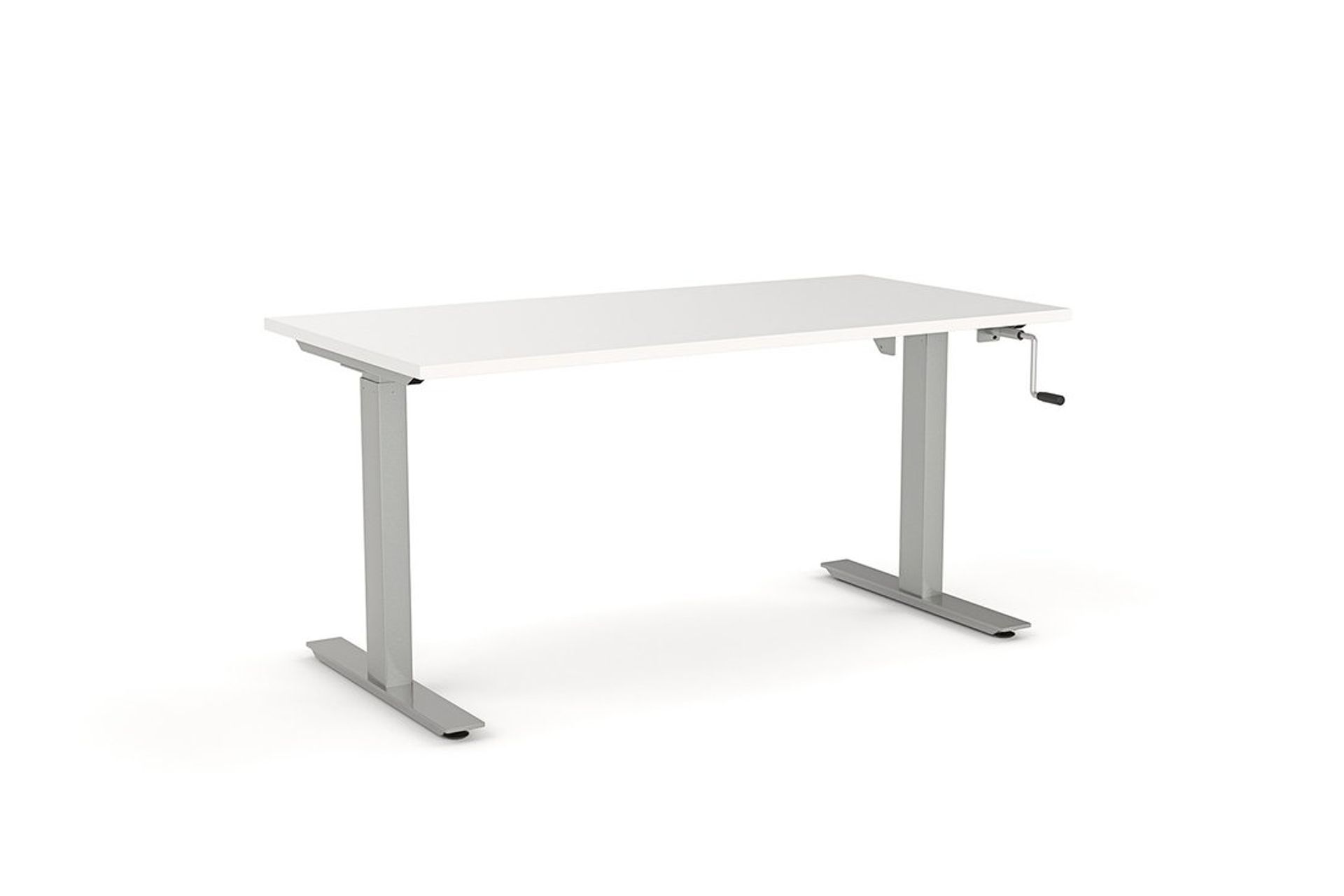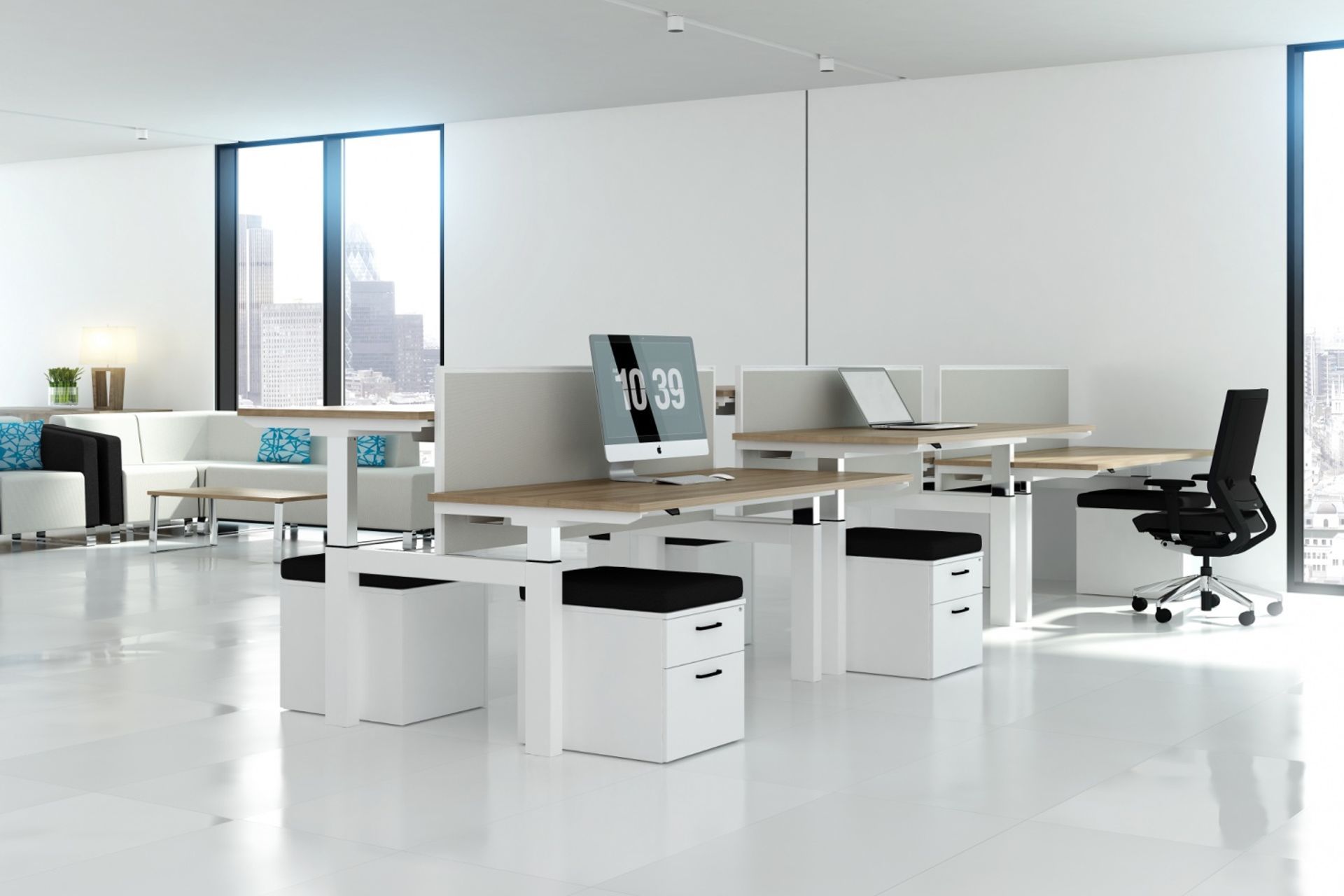Take a stand: why height-adjustable desks are the future of workstations
Written by
03 March 2020
•
4 min read

It’s a frustratingly common experience for many office workers: standing after a day of sitting brings all sorts of aches and pains that weren’t there when you walked through the office doors in the morning.
But it doesn’t have to be that way. With a height adjustable or standing desk, you can alleviate some of the more pernicious effects of being seated all day.
What’s the problem with sitting?
Sitting for extended periods of time is not good for your health; obesity, diabetes, cardiovascular disease, cancer, and premature death have all been linked with long hours of sitting, according to Harvard Health’s faculty editor, Robert Shmerling.
Beyond these more serious effects, sitting at a desk all day can introduce back and shoulder pain that can reduce productivity.
Is standing better than sitting?
Standing can help relieve some of the troubles that sitting all day creates.
The main benefit is often an improvement in shoulder, back and neck pain — standing allows the body to get into a new position and work muscles that wouldn’t have to work when sitting.
Some of the health problems that can result from too much sitting are more a result of a lack of movement than sitting, specifically. For these problems, standing won’t make a great deal of difference because you’re still remaining in a relatively fixed and unmoving position.
That said, standing can come with its own discomforts too. Unless you’re used to it, standing all day can bring about pain in the legs and swelling in the feet.
So with all that, it’s missing the point a bit to ask ‘which is better: sitting or standing?’, because each position has its upsides and downsides. The best solution is to therefore get a desk that can allow you to do both, and alternate between the two as you please.
What kind of height-adjustable desks are available?
Sit-to-stand desks come in few different varieties:
1. Hand crank desks
The simplest kind of sit-to-stand desks usually have hand cranks that are turned to adjust their height. In the world of height adjustable desks, these are generally the most cost efficient option.
2. Electric motor desks
Electric motor desks are similar to hand crank desks in terms of the mechanism they use to change the desk’s height — the difference is the electric motor that does the work for you.

3. Gas spring desks
These desks use a special gas spring mechanism to change their height. They are often faster to change positions than hand crank or electric motor desks, needing only to be unlocked and then guided to the desired height.
What kind of standing desks are available?
If you’re fitting out a commercial office space, and are hesitant to invest in sit-to-stand desks you’re not sure will be used, another option is to have standing desk stations scattered around the office. Instead of people adjusting the height of their own desk, they can take their computer and stand at a different one for a while.
This is a good strategy for testing the standing-desk waters in your office. If you find them to be popular, you can start upgrading individual desks to height-adjustable models with confidence they’ll be a worthwhile investment.
Remember: take a break!
Alternating between standing and sitting is one part of the health equation, but it’s not a panacea. While standing can be a nice break from sitting (and vice versa), it’s not going to get the blood pumping and the oxygen flowing like a bit of movement can.
So remember, take some breaks every so often and get moving. Walk around the block or just to the kitchen to make tea or coffee. It will help you reset and get into the groove for another burst of work.
Take a look through Archipro’s huge range of desks to find the perfect one for your home or commercial office space.
<sup>Top banner image credit: </sup><sup>Unison Workspaces</sup>

